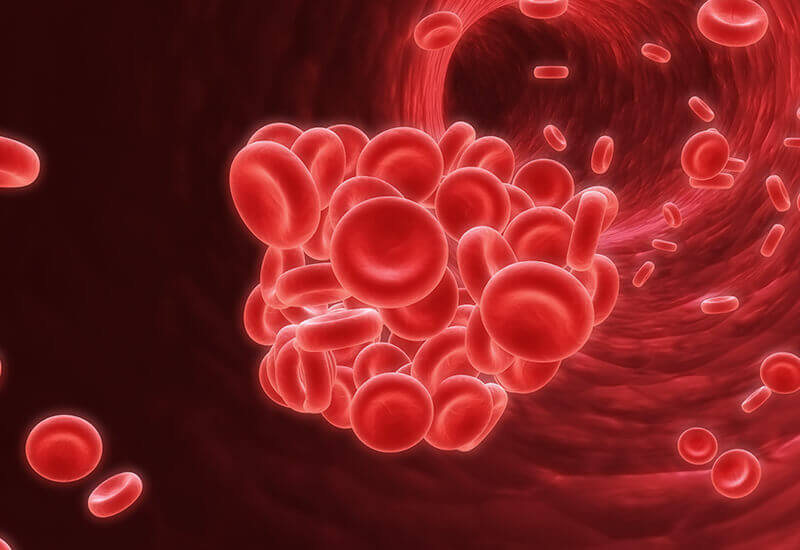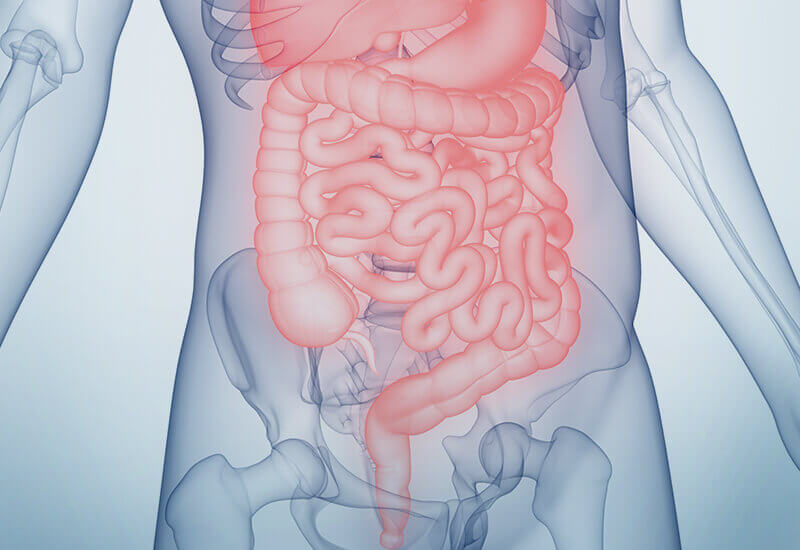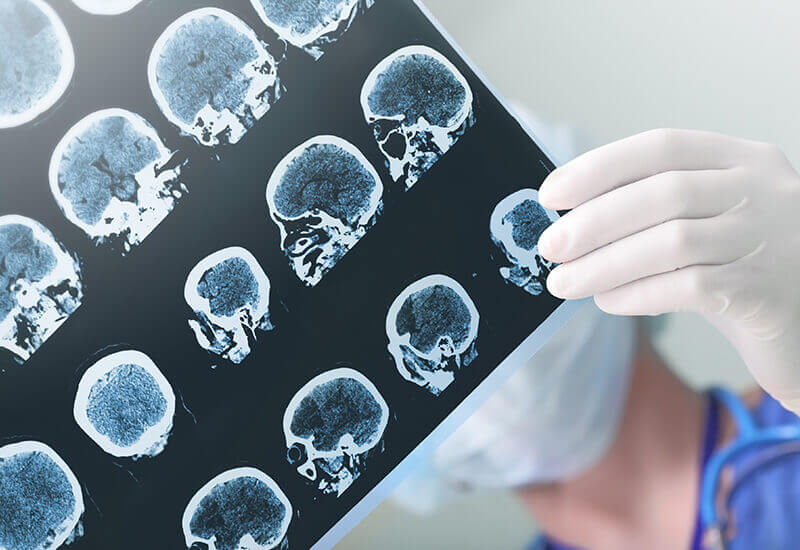Description
What is Thrombophilia?
Thrombophilia is a condition where the blood has an increased tendency to form clots. A blood clot within a vein is known as a venous thrombus and the most common form is deep vein thrombosis, which is a blood clot in a deep vein, predominantly of the leg. If this blood clot breaks loose and travels to the lungs, it is known as a pulmonary embolus and can be very dangerous. A less common (and more severe) form of venous thrombus is known as cerebral venous sinus thrombosis, where a blood clot forms in the dural venous sinuses, which drain blood from the brain.
TURNAROUND TIME
SAMPLE TYPE
AGE REQUIREMENT
GENDER
Test Details
Signs and Symptoms of Venous Thrombosis
Recognizing the signs of deep vein thrombosis is important to allow appropriate treatment before the blood clot breaks loose and causes a much more serious condition (e.g. pulmonary embolism). The symptoms can include swelling and warmth of the leg (or specifically along a vein), pain or tenderness and a color change (increased redness) of the affected leg. However, these symptoms are not always present so diagnosis can be difficult. Deep vein thrombosis affects over 600,000 people in the United States each year, with more than 200,000 requiring hospitalization. Pulmonary embolism occurs when the blood clot breaks loose and travels to the lungs. This is a much more serious and potentially fatal condition and requires immediate medical attention. The symptoms include a shortness of breath, chest pain, coughing up blood, an increased heart rate, lightheadedness and rapid breathing. Every year in the United States, more people die from pulmonary embolism than breast cancer and AIDS combined.
What are the Risk Factors for Thrombophilia?
Multiple factors contribute to the risk of thrombophilia. Health, environmental and lifestyle risk factors include injury and surgery (and immobility during recovery), infections, inflammatory disease, diabetes, cancer and cancer treatments. Some other factors, such as a sedentary lifestyle, obesity and smoking can be reduced by lifestyle changes. Hormonal changes from contraceptive pills and hormone replacement therapies, or during pregnancy, can also increase the risk. High homocysteine levels in the blood can also contribute to abnormal blood clotting. Vitamin B deficiency, reduced kidney, liver or thyroid function, increased blood pressure and certain drugs or excess coffee can lead to elevated homocysteine levels, and an increased risk of abnormal blood clots.
Many thrombophilia risk factors cannot be reduced, particularly age-related risk, ethnic background and genetic risk factors. The risk of blood clotting for children under 15 years is less than 1 in 20,000, but those in their fifties have a 1 in 760 to 1600 chance of a blood clot. Elderly people (over 80 years of age) have an even higher risk, with about 1 in 170 to 220 suffering from a blood clot. Some ethnicities also have an increased risk of thrombophilia compared to others. African Americans have the highest risk, followed by Caucasians and Hispanics. Asians and Pacific Islanders have a much lower risk but blood clots can still occur. There are certain inherited genetic changes that can also increase the risk of thrombophilia. The thrombotic risk DNA panel offered by Genetrace identifies specific mutations in three genes – F5, F2 prothrombin and MTHFR – that all increase the risk of thrombophilia.
The Thrombotic Risk DNA Panel
Three genes are analyzed in the thrombotic risk DNA panel: F5 (Factor V), F2 (Prothrombin) and MTHFR. The Leiden mutation (1691G>A) occurs in the F5 gene and results in a decreased ability to turn off the Factor V blood-clotting factor, leading to an increased risk of blood clotting. Prothrombin is another factor necessary for clotting. Increased prothrombin levels occur in individuals with the 20210G>A mutation in the F2 gene, leading to a higher risk of blood clots. The MTHFR gene encodes an enzyme that controls the level of a chemical in the blood called homocysteine. Two genetic variations in MTHFR, 677C>T and 1298A>C, result in increased homocysteine levels, which in turn increases the likelihood of forming clots. Many individuals, who have one or more of these mutations, do not develop thrombophilia, but the test is still very useful for patients to understand their own risks and make any necessary health and lifestyle changes (e.g. increasing physical activity) to help avoid abnormal blood clotting problems.
How are the Risk Genes Inherited?
The three genes associated with an increased risk of thrombophilia are all located on autosomal chromosomes – F5 and MTHFR on chromosome one and F2 on chromosome eleven. Autosomal chromosomes are inherited in pairs – one from each parent. Therefore each individual can inherit two normal copies of an autosomal gene (homozygous normal), or two copies that carry a genetic mutation (homozygous mutant), or one normal copy and one mutated copy (heterozygous). It is possible to inherit several different combinations of the F5, F2 and MTHFR genes, and each combination is associated with a different risk of thrombophilia.
DNA Testing for Thrombotic Risk
The thrombotic risk DNA panel offered by Genetrace identifies the F5 Leiden mutation (1691G>A), the F2 prothrombin mutation (20210G>A) and two mutations in the MTHFR gene (677C>T and 1298A>C). The F5 Leiden mutation is associated with the highest thrombotic risk, as heterozygotes have up to an 8-fold increased risk, while homozygotes can have up to an 80-fold increased risk. Individuals that have one or two copies of the F2 prothrombin mutation also have an increased risk, but not as high as the risk associated with the F5 Leiden mutation.
Two defective MTHFR genes are required, with at least one carrying the 677C>T mutation, before there is an increased thrombotic risk. Other unknown factors are also required in conjunction with the defective MTHFR genes, before individuals are affected by increased homocysteine levels and the associated risk of thrombophilia.
Recommended Links:
-
Gatt A, Makris M. Hyperhomocysteinemia and venous thrombosis (2007). Semin Hematol. 44(2): 70-6.
-
White RH (2003). The epidemiology of venous thromboembolism. Circulation. 107(23 Suppl 1): I4-I8. doi: 10.1161/01.CIR.0000078468.11849.66.
-
McGlennen RC, Key NS (2002). Clinical and laboratory management of the prothrombin G20210A mutation. Arch Pathol Lab Med. 126(11): 1319-25.
-
Press RD, Bauer KA, Kujovich JL, Heit JA (2002) Clinical utility of factor V leiden (R506Q) testing for the diagnosis and management of thromboembolic disorders. Arch Pathol Lab Med. 126(11): 1304-18.
-
Angelini A et al. (2003). Identification of Three Genetic Risk Factors for Venous Thrombosis Using a Multiplex Allele-Specific PCR Assay: Comparison of Conventional and New Alternative Methods for the Preparation of DNA from Clinical Samples. Journal of Thrombosis and Thrombolysis. 16(3): 189-193.





